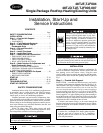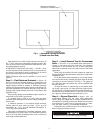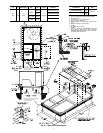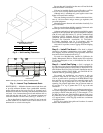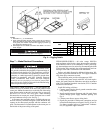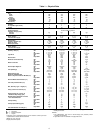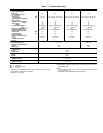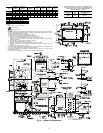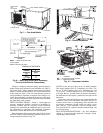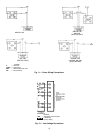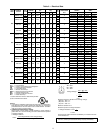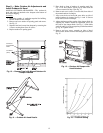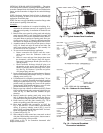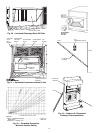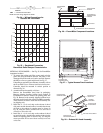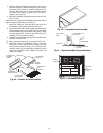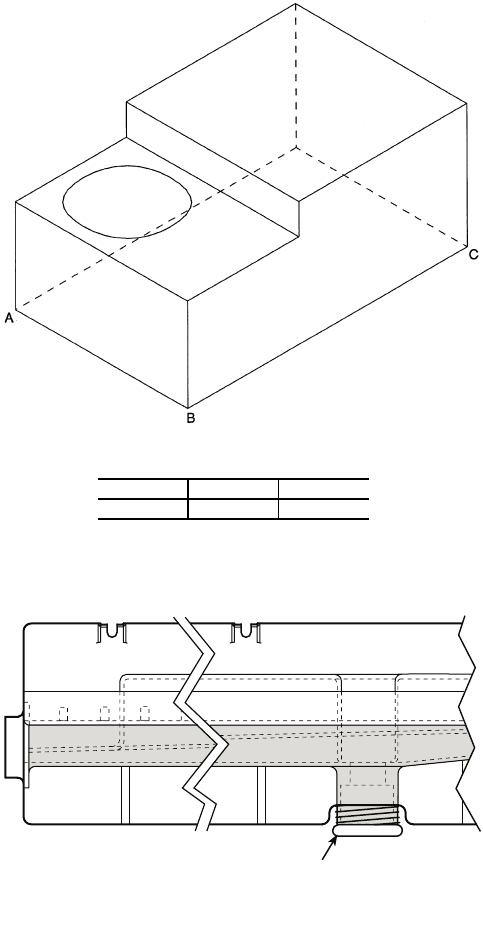
4
POSITIONING — Maintain clearance around and above unit
to provide minimum distance from combustible materials,
proper airflow, and service access. See Fig. 6. A properly posi-
tioned unit will have the following clearances between unit and
roof curb:
1
/
4
-in. clearance between roof curb and base rails on
each side and duct end of unit;
1
/
4
-in. clearance between roof
curb and condenser coil end of unit. (See Fig. 2, section C-C.)
Do not install unit in an indoor location. Do not locate unit
air inlets within 10 ft of exhaust vents or other sources of con-
taminated air or as local codes require.
Be sure that unit is installed so that snow will not block the
combustion intake or flue outlet.
Unit may be installed directly on wood flooring or on Class
A, B, or C roof-covering material when roof curb is used.
Although unit is weatherproof, guard against water from
higher level runoff and overhangs.
Flue vent discharge must have a minimum horizontal clear-
ance of 4 ft from electric and gas meters, gas regulators, and
gas relief equipment.
Minimum distance between unit and other electrically live
parts is 48 inches.
Flue gas can deteriorate building materials. Orient unit such
that flue gas will not affect building materials.
Adequate combustion-air space must be provided for proper
operation of this equipment. Be sure that installation complies
with all local codes and Section 5.3, Air for Combustion and
Ventilation, NFGC (National Fuel Gas Code), and ANSI
(American National Standards Institute) Z223.1, and NFPA
(National Fire Protection Association) 54 TIA-54-84-1.
In Canada, installation must be in accordance with the
CAN1- B149 installation codes for gas burning appliances.
After unit is in position, remove rigging skids and shipping
materials.
Step 5 — Install Flue Hood —
Flue hood is shipped
screwed to the burner compartment access panel. Remove
from shipping location and using screws provided, install flue
hood and screen in location shown in Fig. 7.
For units size 004-006 being installed in California Air
Quality Management Districts, which require NOx emissions
of 40 nanograms/joule or less, a field-installed low NOx kit
must be used.
Step 6 — Install Gas Piping —
Unit is equipped for
use with type of gas shown on nameplate. Refer to local build-
ing codes, or in the absence of local codes, to ANSI Z223.1 en-
titled National Fuel Gas Code. In Canada, installation must be
in accordance with the CAN1.B149.1 and CAN1.B149.2 in-
stallation codes for gas burning appliances.
For natural gas applications, gas pressure at unit gas
connection must not be less than 4 in. wg or greater than
13.0 in. wg while unit is operating. On 48TJ005,006,007 high
heat units, the gas pressure at unit gas connection must not be
less than 5 in. wg or greater than 13 in. wg while the unit is
operating. For propane applications, the gas pressure must not
be less than 5 in. wg or greater than 13 in. wg at the unit
connection.
Size gas sully piping for 0.5 in. wg maximum pressure drop.
Do not use supply pipe small than unit gas connection. Support
gas piping as shown in the table in Fig. 8. For example, a
3
/
4
-in.
gas pipe must have one field-fabricated support beam every
8 ft. Therefore, an 18-ft long gas pipe would have a minimum
of 2 support beams, a 48-ft long pipe would have a minimum
of 6 support beams.
See Fig. 8 for typical pipe guide and locations of external
manual main shutoff valve.
DRAIN PLUG
CONDENSATE PAN (SIDE VIEW)
MAXIMUM ALLOWABLE
DIFFERENCE (in.)
A-B B-C A-C
0.5 1.0 1.0
Fig. 3 — Unit Leveling Tolerances
NOTE: Drain plug is shown in factory-installed position.
Fig. 4 — Internal Trap Condensate Drain



